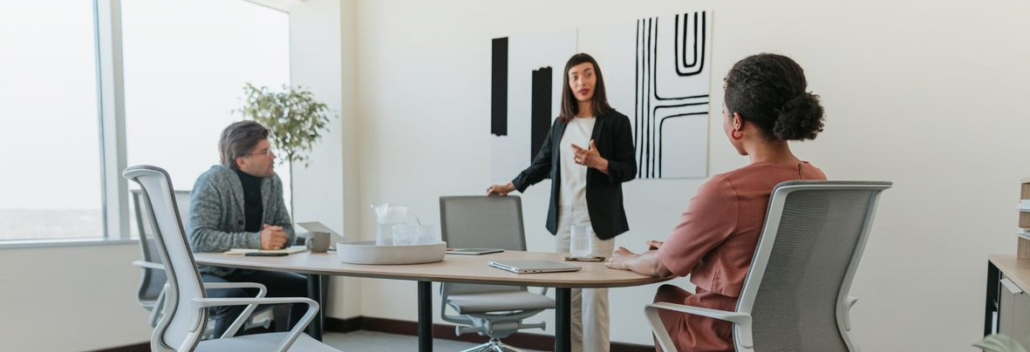Haworth – How to Inspire Your Employees as They Return to the Office
With return-to-work(place) in full swing in many countries, now is a good time to give your office an upgrade. A change in décor, updated social spaces for focus work and collaboration, and new high-quality furniture should be top of mind. An office redesign is a great way to inspire your employees to make their way back to the workplace. But what looks good or feels right in theory may not be the best fit for your office or your people.
Before you invest in a workplace redesign, create a plan and visualize the space as it will be with new décor, social spaces, and furniture. If you skip this crucial step in the design process, you may experience unforeseen issues when your new furniture arrives on-site. To help you avoid costly design mistakes, transition from the old to the new following our 8 tips to a successful workplace redesign.
Start Planning Early
A fully thought-out timeline showing before, during, and after goals can reduce stress and ensure a seamless transition. Consider assigning roles among your staff and teams to help spearhead different aspects of the office transition. This will help reduce stress and give people ownership of the process.
“Spring” Cleaning
When you are looking to redesign your office space, take the time to purge old and outdated materials—some may even need to be shredded for security purposes. And take advantage of the open space while the furniture is removed because you will have easier access to floors and carpets for maintenance and deep cleaning.
Label Everything
Be very specific when labeling the content and artifacts placed in boxes and storage carts to ensure the move-out and -in processes are seamless. Color-coding is a great way to help everyone stay organized and consistent throughout the redesign.
Power Locations
Map the location of desks and workspaces to ensure that each has the necessary power access available before your furniture installation. Most employees use some sort of technology during the workday, and they should have the ability to charge their devices with ease wherever they are in the office.
Trash & Recycle
Set up the office with a plan for trash removal and recycling. Think through where bins should be readily accessible—like near a snack bar or coffee area—to minimize the rubbish in and around your refreshed office space.
Create a Buffer Zone
Give your employees time to focus on the move to avoid adding any unnecessary stress to their normal day-to-day work. Encourage employees to adjust their calendars and schedule meetings accordingly before, during, and after the office space transition.
Unpacking & Assembly Area
Locate an area where unboxing and assembly can take place during installation. This will help you streamline the process and avoid scheduling delays.
Celebrate Your Space
Plan a grand-reopening event for employees and customers to celebrate your new office space. Build excitement and showcase how the redesign better supports employee well-being and organizational culture.
As organizations seek to understand what short- and long-term workplace changes to implement—from facility needs, to work rotation and the sequenced return of the workforce—planning is a huge part of the return to workplace process.
How do you empower your workforce and leverage your space in new ways? Create workspaces that support people’s physical and psychological health; address facility requirements, density, and exposure; and reinforce your organizational culture. A well-planned redesign can do just that.





